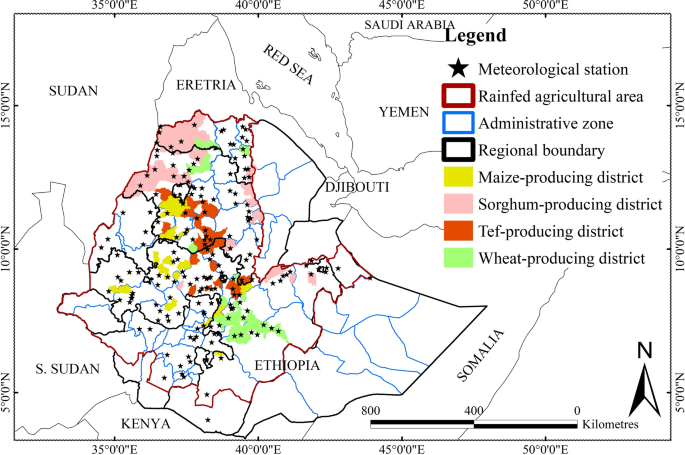Report on Maternal Vitamin D Status in Twin Pregnancies and Implications for Sustainable Development Goals
1.0 Introduction and Alignment with Global Goals
This report analyzes a study on the association between maternal Vitamin D (VD) levels and pregnancy outcomes in twin pregnancies. The findings are critically relevant to several United Nations Sustainable Development Goals (SDGs), particularly SDG 3 (Good Health and Well-being), which aims to reduce maternal and neonatal mortality. The research underscores the importance of maternal nutrition as a key determinant of health outcomes, directly contributing to the achievement of global health targets.
2.0 Study Overview and Key Findings
A study involving 324 twin pregnancies was conducted to investigate the relationship between maternal VD levels and adverse maternal and neonatal outcomes. The primary findings are summarized below:
- Prevalence of Vitamin D Deficiency: A significant nutritional gap was identified, with only 25.6% of participants having sufficient VD levels. The majority exhibited insufficiency (46.9%) or deficiency (27.5%).
- Association with Spontaneous Preterm Birth (sPTB): Mid-pregnancy VD deficiency was identified as an independent predictor for sPTB (OR: 2.19). This establishes a critical link between micronutrient status and a leading cause of neonatal morbidity and mortality.
- Risk Analysis: An L-shaped risk relationship was observed, where each 1 ng/mL decrease in VD concentration increased the risk of sPTB by 14.94%.
- Other Outcomes: No statistically significant association was found between maternal VD levels and hypertensive disorders of pregnancy (HDP), gestational diabetes mellitus (GDM), or neonatal birth weight.
3.0 Contribution to Sustainable Development Goal 3: Good Health and Well-being
The study’s conclusions directly support the targets of SDG 3 by identifying a modifiable risk factor for adverse birth outcomes.
- Target 3.1 (Reduce Maternal Mortality): While not directly measuring mortality, the study addresses maternal health complications. Ensuring adequate nutritional status, such as sufficient Vitamin D, is a fundamental component of comprehensive antenatal care that contributes to overall maternal well-being and reduces the risk of complications.
- Target 3.2 (End Preventable Neonatal Deaths): The strong association between VD deficiency and spontaneous preterm birth is of paramount importance. Preterm birth is a primary driver of neonatal mortality and long-term disability. The research suggests that addressing VD deficiency is a crucial preventive strategy to improve neonatal survival and health, directly advancing this target.
4.0 Implications for SDG 2 (Zero Hunger) and SDG 5 (Gender Equality)
The research also has broader implications for other interconnected SDGs.
- SDG 2 – Target 2.2 (End Malnutrition): Vitamin D deficiency is a form of micronutrient malnutrition. The high prevalence of insufficiency and deficiency in the study cohort highlights a public health challenge that aligns with the goal of ending all forms of malnutrition, particularly among vulnerable groups like pregnant women.
- SDG 5 – (Gender Equality): Promoting maternal health is integral to achieving gender equality. By identifying interventions that can prevent adverse pregnancy outcomes, this research supports women’s health and well-being, empowering them to lead healthy and productive lives.
5.0 Conclusion and Recommendations for Policy Action
The study concludes that maintaining adequate Vitamin D levels during mid-pregnancy is a critical preventive measure for reducing the risk of spontaneous preterm birth in twin pregnancies. This finding presents a clear opportunity for public health interventions aligned with the SDGs.
Recommendations:
- Integrate VD Screening: Public health policies should consider integrating VD screening into routine antenatal care, especially for high-risk pregnancies, to achieve SDG 3.
- Targeted Supplementation: Develop and implement targeted supplementation programs for pregnant women identified with VD deficiency, focusing on the critical mid-pregnancy window.
- Public Health Education: Enhance awareness among healthcare providers and expectant mothers about the importance of Vitamin D for maternal and neonatal health, contributing to both SDG 2 and SDG 3.
Analysis of Sustainable Development Goals in the Article
1. Which SDGs are addressed or connected to the issues highlighted in the article?
-
SDG 3: Good Health and Well-being
The article directly addresses this goal by investigating maternal and neonatal health outcomes. It focuses on pregnancy complications such as spontaneous preterm birth (sPTB), hypertensive disorders of pregnancy (HDP), and gestational diabetes mellitus (GDM), as well as neonatal health measured by birth weight. The core aim of the research is to improve health outcomes for both mothers and newborns in twin pregnancies.
-
SDG 2: Zero Hunger
This goal is relevant through its focus on ending all forms of malnutrition. The article centers on Vitamin D deficiency and insufficiency, which are forms of micronutrient malnutrition. By examining the nutritional status of pregnant women and its impact on health, the study connects directly to the goal of improving nutrition, particularly for vulnerable groups like pregnant women.
2. What specific targets under those SDGs can be identified based on the article’s content?
-
Targets under SDG 3: Good Health and Well-being
-
Target 3.1: By 2030, reduce the global maternal mortality ratio.
While the article does not measure maternal mortality, it investigates significant risk factors such as hypertensive disorders of pregnancy (HDP). Preventing and managing such complications is a critical step toward reducing maternal mortality. The research contributes to understanding factors that can improve maternal health during pregnancy.
-
Target 3.2: By 2030, end preventable deaths of newborns and children under 5 years of age.
The article’s primary finding is that Vitamin D deficiency is an independent predictor of spontaneous preterm birth (sPTB), a leading cause of neonatal mortality and morbidity. By identifying a “critical preventive window” to reduce sPTB, the research directly contributes knowledge aimed at preventing adverse neonatal outcomes and, by extension, neonatal deaths.
-
-
Target under SDG 2: Zero Hunger
-
Target 2.2: By 2030, end all forms of malnutrition… and address the nutritional needs of… pregnant and lactating women.
The study’s entire premise is based on addressing the nutritional needs of pregnant women. It quantifies Vitamin D deficiency, stating that “27.5% [were] deficient” and “46.9% insufficient.” By exploring the health consequences of this specific micronutrient deficiency, the article highlights the importance of addressing malnutrition in pregnant women to achieve better health outcomes.
-
3. Are there any indicators mentioned or implied in the article that can be used to measure progress towards the identified targets?
-
Indicators for SDG 3 (Good Health and Well-being)
-
Incidence of spontaneous preterm birth (sPTB)
The article uses this as a primary outcome indicator. It finds that mid-pregnancy Vitamin D deficiency is a significant predictor, with an odds ratio of 2.19 for sPTB. This makes the rate of sPTB a direct indicator of neonatal health risk.
-
Incidence of hypertensive disorders of pregnancy (HDP) and gestational diabetes mellitus (GDM)
These are used as indicators of maternal health. Although the study “did not provide evidence for a statistically significant association” between Vitamin D levels and these conditions, their measurement is crucial for monitoring maternal well-being.
-
Neonatal birth weight
This is a key indicator of newborn health. The study measured it but found no significant association with maternal Vitamin D levels, instead linking it to “chorionicity (p=0.004), HDP (p=0.046), and neonatal sex (p=0.021).”
-
-
Indicators for SDG 2 (Zero Hunger)
-
Prevalence of Vitamin D deficiency and insufficiency in pregnant women
The article provides precise data for this indicator, reporting that among the participants, “25.6% having sufficient levels, 46.9% insufficient, and 27.5% deficient.” This directly measures the extent of malnutrition in the studied population.
-
Maternal Vitamin D concentration
The study uses the specific measurement of serum Vitamin D levels (e.g., “mean mid-pregnancy VD concentration was 25.08±8.31 ng/mL”) as a quantifiable indicator of the nutritional status of pregnant women.
-
4. Create a table with three columns titled ‘SDGs, Targets and Indicators” to present the findings from analyzing the article.
| SDGs | Targets | Indicators |
|---|---|---|
| SDG 2: Zero Hunger | Target 2.2: End all forms of malnutrition and address the nutritional needs of pregnant women. |
|
| SDG 3: Good Health and Well-being | Target 3.1: Reduce the global maternal mortality ratio. |
|
| Target 3.2: End preventable deaths of newborns. |
|
Source: frontiersin.org







